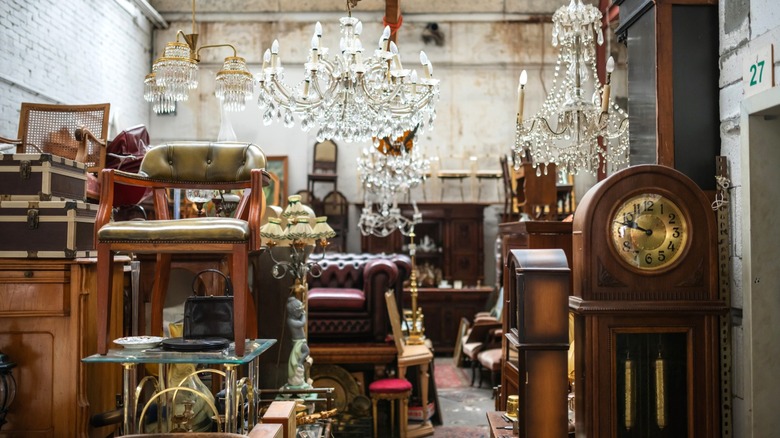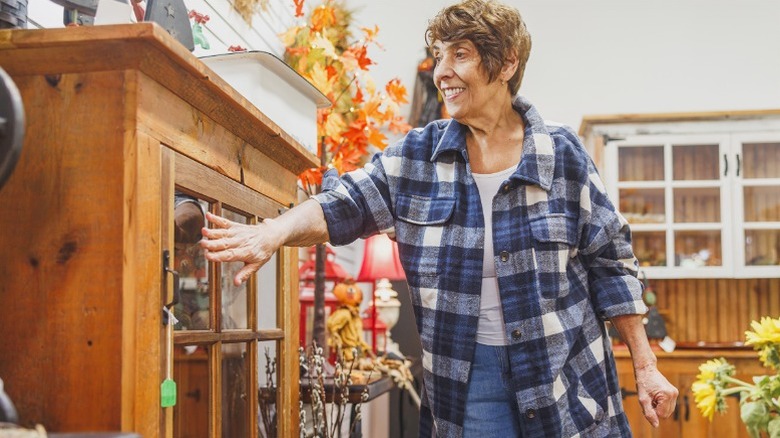Do This One Test At The Thrift Store Before Bringing Furniture Home
Thrift stores can be a wonderful source of well-crafted vintage furniture you'll enjoy in your home for years to come — and there are plenty of reasons why buying thrifted items is a smart choice. For starters, for the same price as a mass-produced particleboard table, you might be able to score a unique solid wood piece instead. If you research the most valuable items to seek out at a thrift store, you will often uncover exceptional bargains from respected brands. With a good eye, thorough inspections, and some sleuthing, you'll notice critical details, like dovetailed joints and antique hardware, and unearth treasures to refinish that will add a unique touch of history to your home. More importantly, testing aspect's like the furniture's stability could clue you into serious defects, such as broken panels or separating joints, that may otherwise be easy to miss.
Sadly, not all furniture finds in secondhand shops are diamonds in the rough, and there are certainly things you should never buy at the thrift store no matter how appealing they look initially. Before bringing anything home, carefully check for any issues that can't be easily fixed. Test furniture as you would use it in the home, and watch for structural problems. While a table or loveseat may look fantastic, if it has broken, loose, or rotting parts, it won't have long-term stability nor be worth your time and money. Finding true thrift store gems can take work, but if you know what to look for to make sure your find is structurally sound, you might just discover something remarkable, and you'll have the satisfaction of knowing you did your part to help the planet by preventing a worthy piece from ending up in a landfill.
How to find sturdy, worthwhile furniture at thrift stores
To test thrift store furniture, get up close and try it out — don't just eyeball it. Does that antique chair wobble when you sit down? Do a dresser's drawers slide without sticking, and do the doors swing smoothly on secure hinges? Does it sit squarely on the floor? While minor issues like a loose handle or shallow surface scratches are easy fixes, an item that's beautiful but unsturdy can be time-consuming and costly to repair, so it's often best to pass it over.
Aside from testing it, look at an antique piece's construction to determine its stability. Ideally, you should know how to identify fake versus real solid wood in vintage furniture and recognize indicators like noticeable grain textures and a heavier weight. Antique wood furniture built with tight, solid joints and chairs or sofas with well-designed, supportive frames are better investments than those made from glued or stapled engineered wood. Hardwood furniture is beautiful and durable, but even softwoods like pine are typically sturdier than MDF or particleboard pieces.
Once you've confirmed that a piece is solid and sturdy, evaluate its finish, cleanliness, and upholstery. Something with a clean and presentable surface will be far easier to refresh than one that's chipped or covered in worn fabric. Upholstered pieces are typically one type of furniture you should avoid buying at the thrift store because they may retain odors or pests. If you do pick up a padded or fabric item, carefully inspect for stains or bad smells, and look for dark specks or small holes indicating pest damage. Cosmetic imperfections are fine, but items with severe issues like a lack of stability and hard-to-fix cosmetic issues might be impossible to update to a condition where you can enjoy them.

